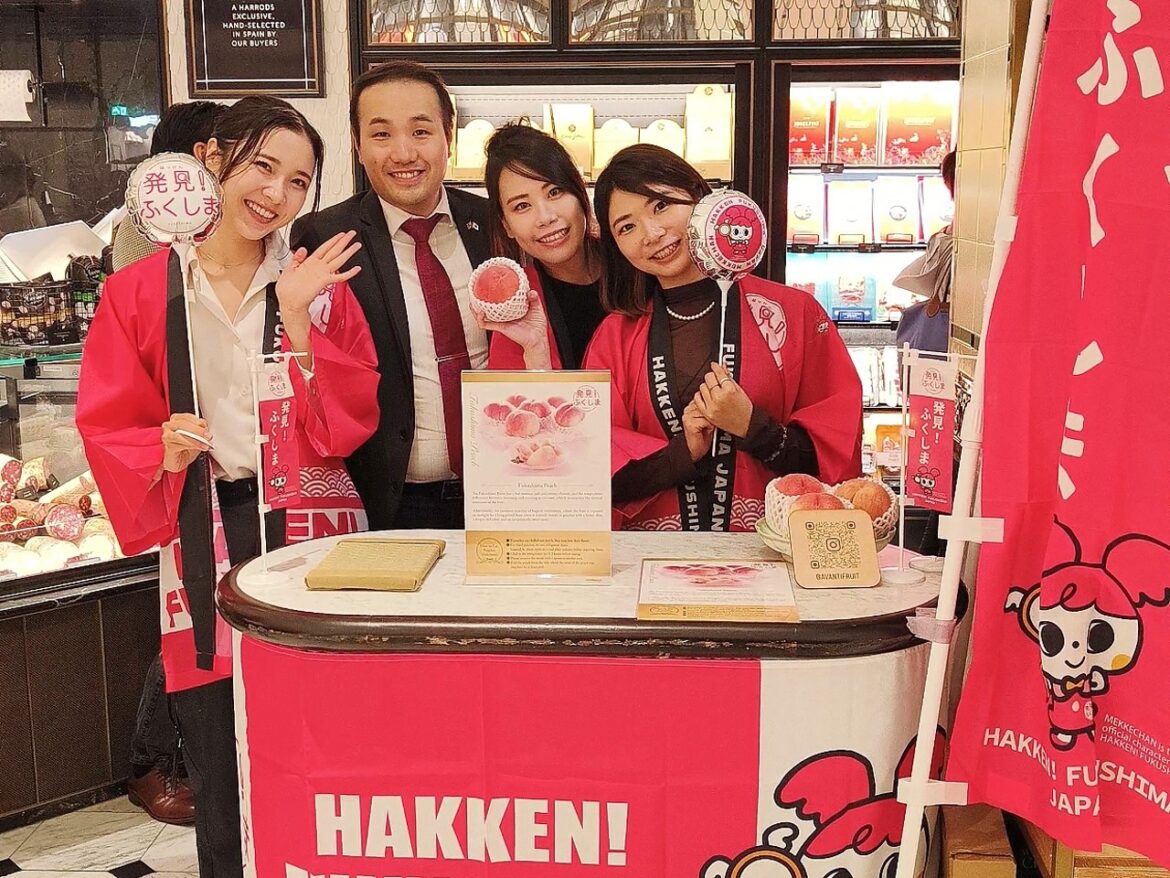When it comes to luxury fruits, Japan is well known for its pursuit of perfection and dedication to quality. You may have already heard of the premium melons from Yubari which can command prices of 5 million yen, or seen the photogenic square watermelons that have gained popularity around the world. As Japan boasts several standout fresh fruit producing areas, it’s no wonder that there are many prized fruits ranging from strawberries to nashi pears. Among the many fruits that Japan produces, peaches hold a special place in the hearts of fruit lovers, especially the Japanese peaches from Fukushima which stand out for their exceptional sweetness, juiciness, and perfect texture.
The Unique Charm of Fukushima Peaches
Fukushima prefecture, located in the north-east of Japan, is considered to be the nation’s fruit kingdom, and apart from being the second largest producer of peaches in Japan, it is famous for its delicious grapes, cherries, apples, and pears. The region has perfect growing conditions for fruits with long hours of daylight, a climate of hot summers, and a contrast between warmer temperatures in the day and lower ones in the evening.
These conditions all contribute to the sweetness of Fukushima peaches, which have naturally high sugar content. Japanese peaches are known for being incredibly sweet, however the sweetness in peaches from Fukushima has been carefully developed by farmers over many years. Using the Brix scale, which measures sugar in fruit, demonstrates that some of the sweetest peaches in the world have been produced in Fukushima, with one peach reaching a mouth-watering 32 degree Brix – just eight degrees away from the top of the scale.
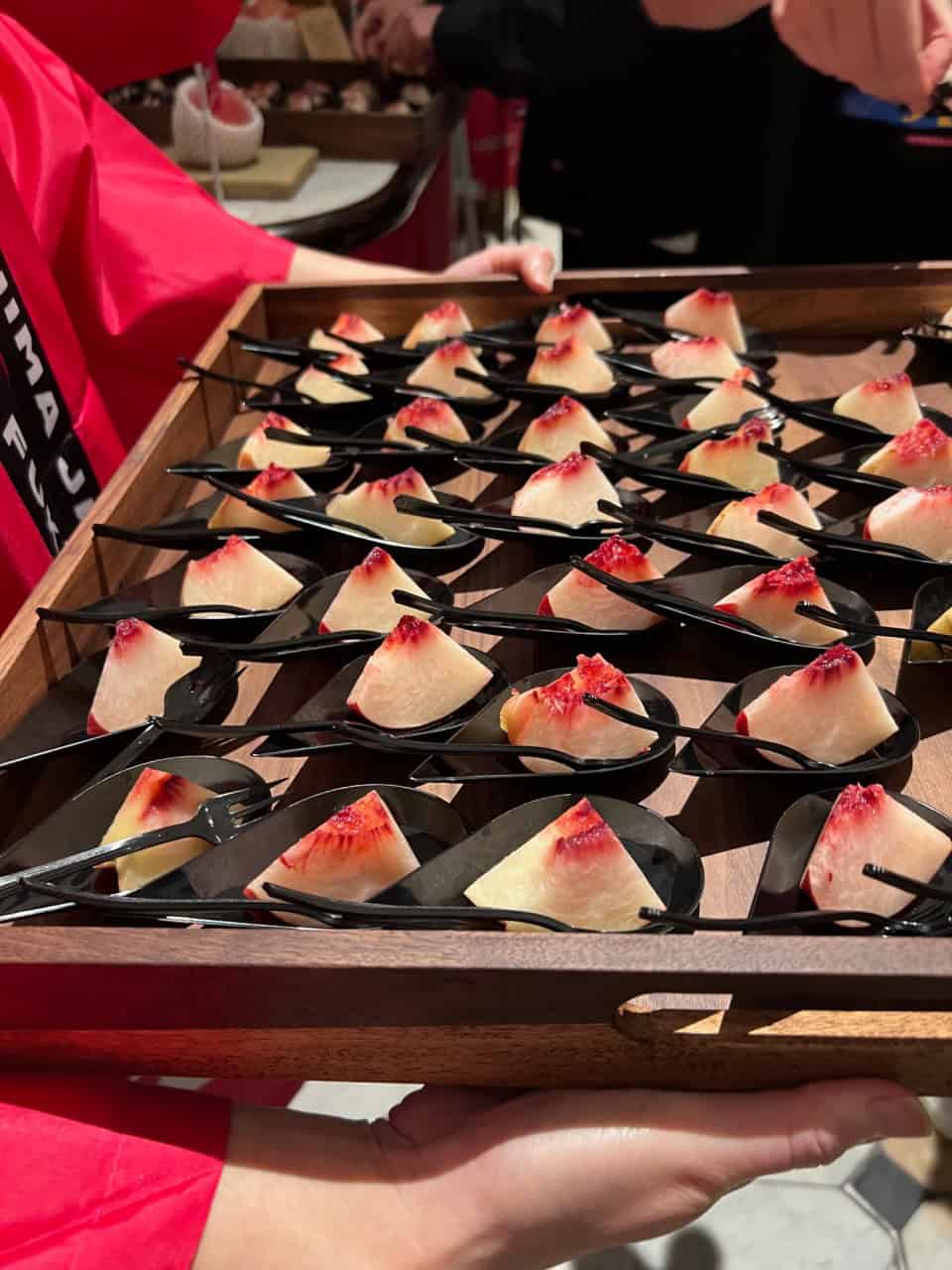
Along with their rich sweetness, Japanese peaches from Fukushima have exceptional juiciness and burst with flavour. These special peaches are also well known for their soft white flesh, delicate aroma, and soft tender feel.
How do Fukushima Farmers produce Japanese peaches?
The farmers in Fukushima prefecture believe that the sweetness of the peaches depends on the climate and the amount of rainfall in the region. They grow the peaches in direct sunlight for long periods of time which increases the rich taste and brings out a more attractive appearance with a firmer skin.
Over the years, farmers in the prefecture have improved the quality of their peaches by combining traditional and new farmings methods. For example, by trimming back and shaping the trees, they maximise the sunlight the peaches receive which intensifies the natural sweetness of the fruits. A more modern method is the use of light sensors to measure sugar content and hardness, and carefully monitoring which of these Japanese peaches are ready to be sold.
Japanese fruits in the Harrods Food Hall
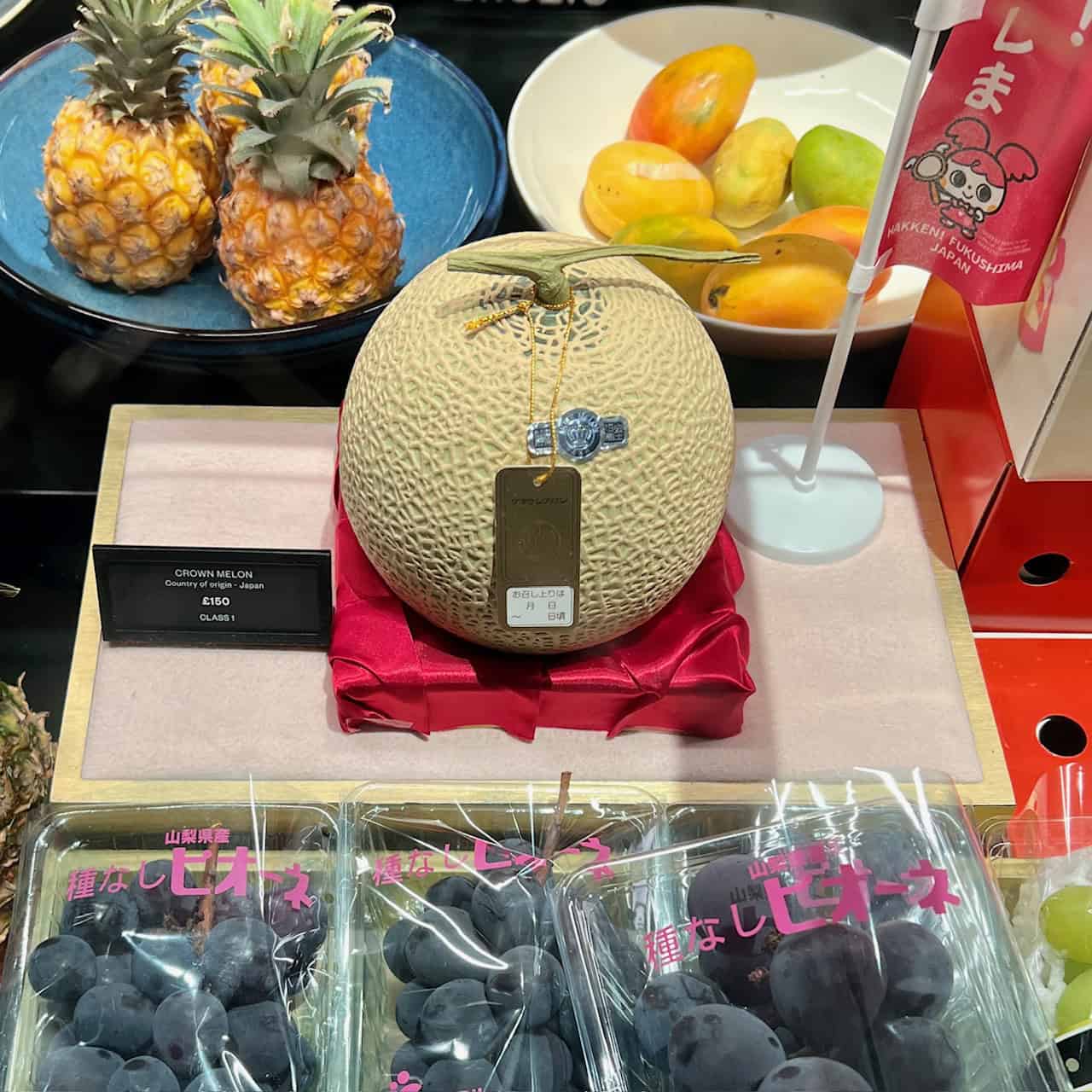
The Japanese fruits counter at Harrods Food Hall, which launched on December 23rd just before Christmas 2023, brings a unique taste of Japan’s finest seasonal produce to London. At the time of the peach event, there were exquisite Shine Muscat and Pione grapes from Yamanashi, known for their incredible sweetness and crisp texture. Also available was the famous Crown Melon from Shizuoka, celebrated for its perfect balance of sweetness and unparalleled quality.
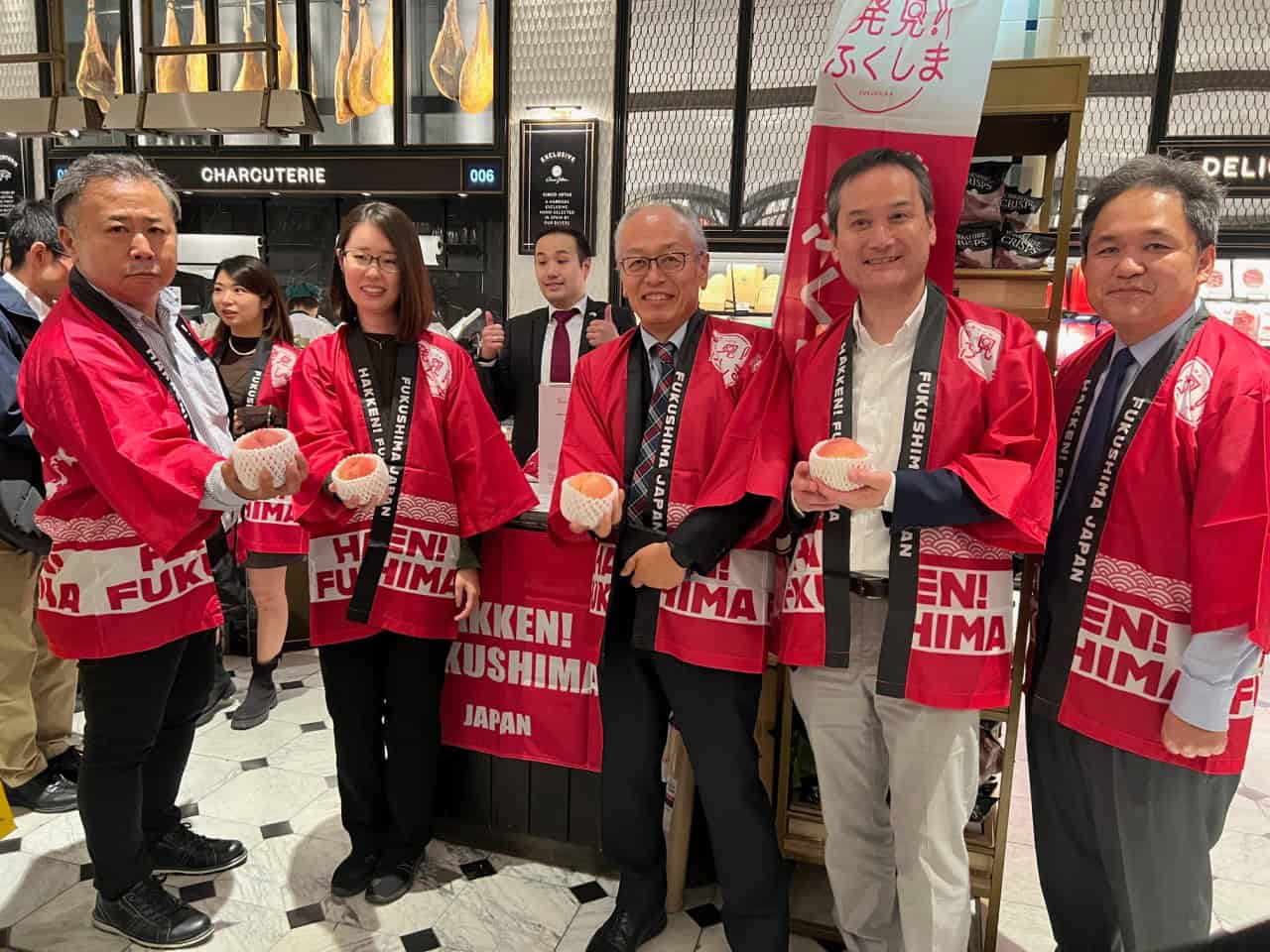
On Sunday, September the 8th 2024, for the first time ever, there was a peach sampling event hosted at Harrods to introduce the delicious peaches produced in Fukushima Prefecture to a UK audience. For many in the UK, Japanese peaches were an exotic and unfamiliar treat, but the feedback received after trying the samples was overwhelmingly positive! Several people who tried the peach samples said they had no idea that Fukushima produced peaches and were inspired to try more fruit from the region, with one or two even considering a trip to Fukushima as part of a holiday to Japan. For this writer, who lived in Fukushima for 3 years and has family roots there, this was truly heartwarming.
This event was organised by TEPCO, as part of their “Discover! Fukushima” (発見!ふくしま/HAKKEN!FUKUSHIMA) logo, which promotes the delicious food and fruits of Fukushima worldwide. They coordinated the peach sampling event at Harrods along with Avanti 4sia, a specialist in importing premium fruits from Japan.
The Sakura Hakuto Peach from Fukushima
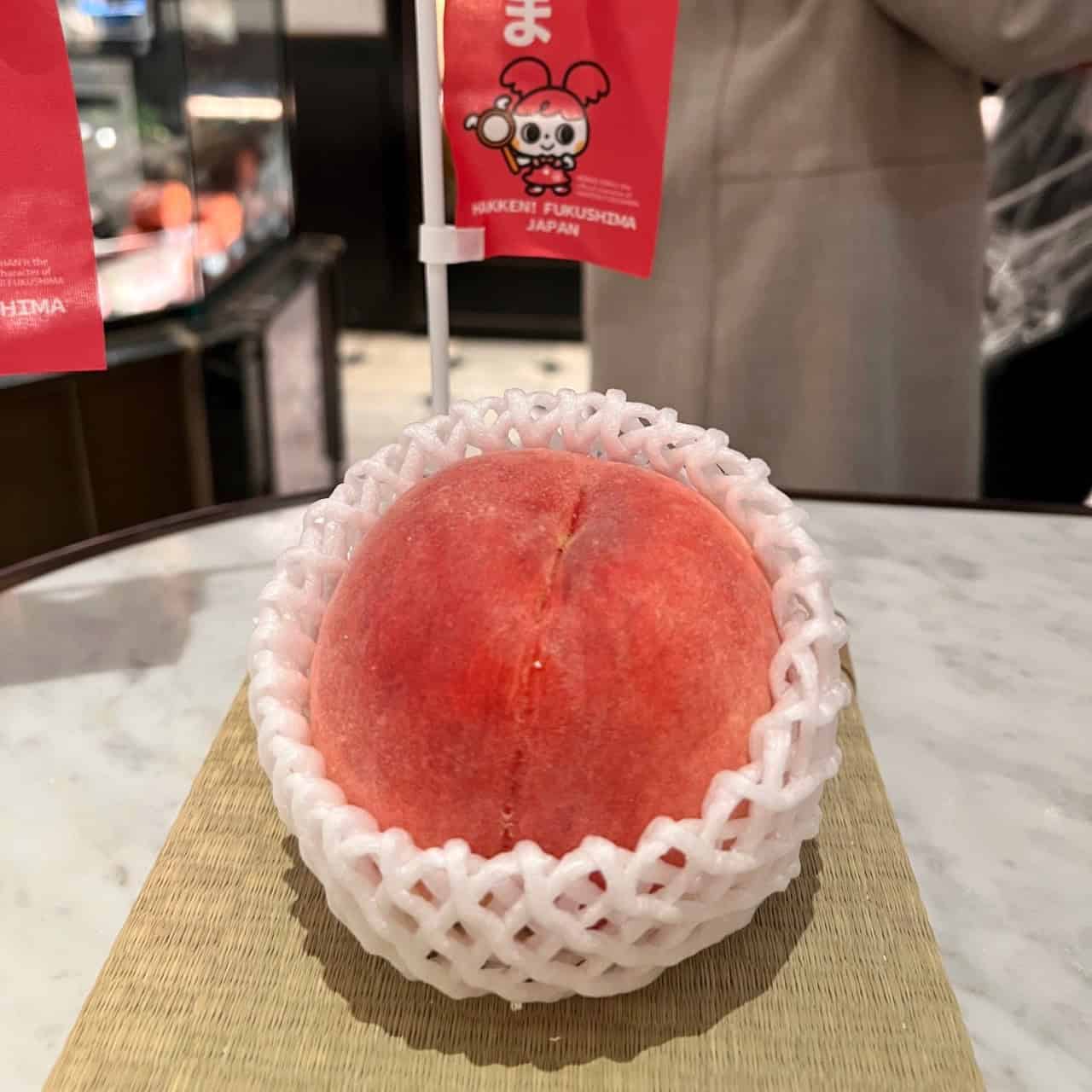
The Fukushima peach varietal selected for the peach sampling at Harrods is the Sakura Hakuto, a Japanese peach from the Date region in the far north of Fukushima prefecture, near the border with Miyagi prefecture. Growing in this northern area means the climate is colder, with a significant temperature difference between the warm days and cooler evenings. This temperature variation contributes to the sweetness of the Sakura Hakuto, as the greater the contrast between day and night temperatures, the more sugar content the peaches retain.
Some of the special characteristics of the Sakura Hakuto are it’s lighter white skin appearance and delicate pink blush, and its firmer skin. Having stronger skin is essential for transportation to the UK as peaches are delicate and can be easily bruised. This is why the Sakura Hakuto was favoured over the most popular Fukushima peach varietal – the Akatsuki, which is another juicy Japanese peach with its vibrant red skin.
As the Sakura Hakuto skin is firmer than others, not only will it arrive in perfect condition but it will also have a longer shelf life. For those who prefer eating peaches with softer skin, you simply have to leave it for a few days at room temperature and the peach skin will be softer. One thing to remember is that in Japan people often peel the skin before eating but we know that in the UK, many people will be more used to eating the skin too.
Sakura Hakuto Peach Sampling at Harrods
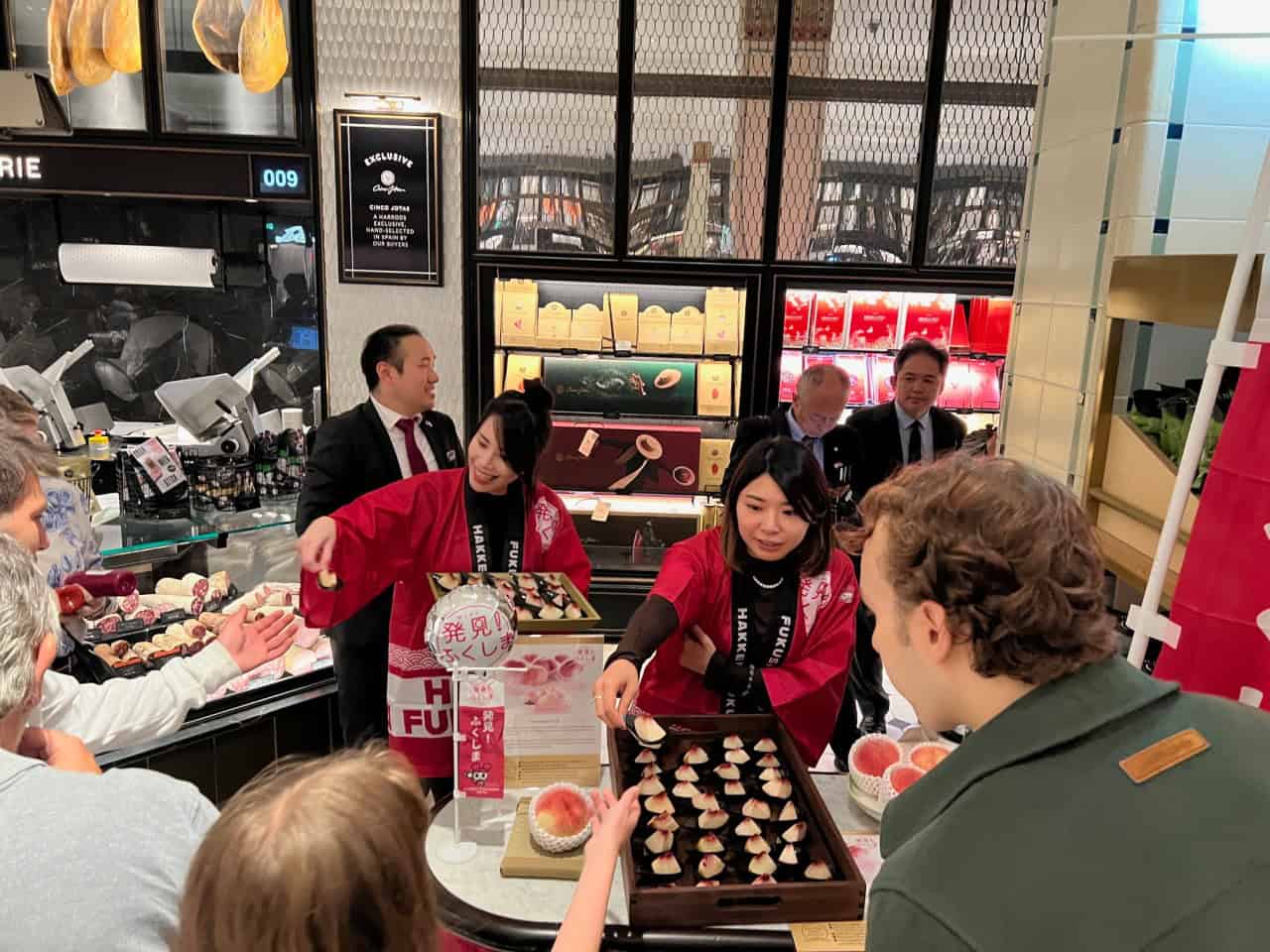
The Sakura Hakuto Peach sampling event took place from 12pm on September 8th in the Food Hall of Harrods. Over the course of 6 sampling sessions held each hour, a total of 1,800 tasting samples were served, with each session using 30-35 medium-sized peaches. Since these peaches are larger than typical peaches found in Europe, weighing around 330 grams, they could easily be divided into six portions.
Each session attracted eager customers, forming queues even before the sampling began, and the samples were all eaten within 15 minutes. Reactions from customers were extremely positive, with many expressing that they had “never had anything like this before” and expressing the peaches “tasted much better than the ones they usually eat in the UK.” They described the peaches as “excellent” in taste, with a “great smell,” and highlighted their “really good flavour,” “texture,” and “crunchiness” .
Overall, the general consensus was these Japanese peaches were “delicious,” “sweet,” “juicy,” and perfect for a holiday treat or special occasion.
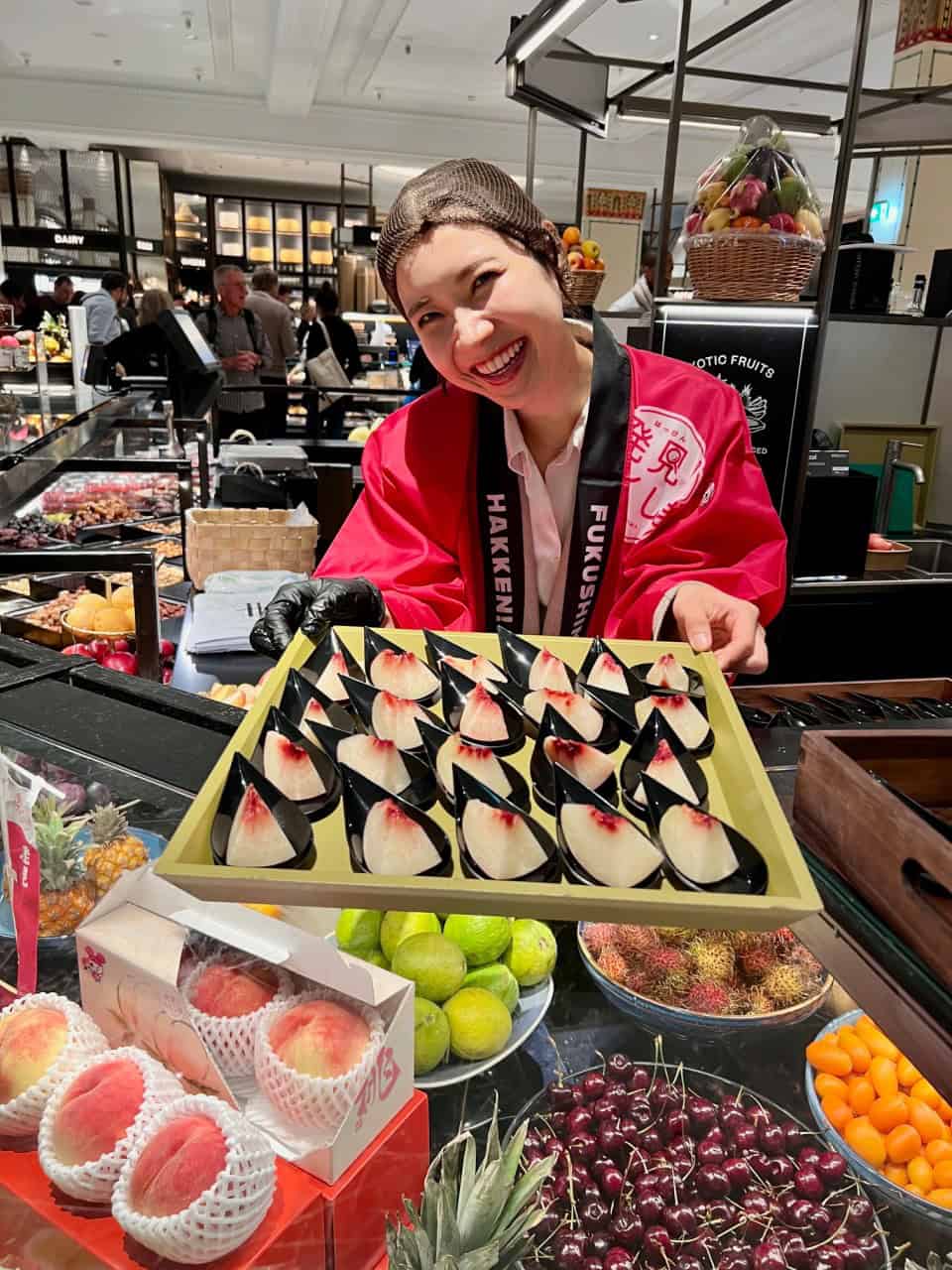
How to prepare and enjoy Japanese Peaches
First, you may want to know how you pick and prepare your peaches. The good news is that as you’d expect, the ones that were available at the sampling event at Harrods are in prime condition to be taken home and eaten. Once you have your peaches, keep them in a cool place at room temperature. Do not put them in the fridge too soon because this can stop their taste and smell from fully developing. With this extra care you can enjoy Fukushima peaches at their best.
Top tips for preparing your peaches
- Chill in the refrigerator for 2 or 3 hours before eating
- If peaches are chilled too much they lose their flavour
- Please remove the pit using a spoon or similar tool
- Peel the peach starting from the side where the stem was attached for a clean peel
Simple Yet Delicious Ways to Savour Fukushima Peaches
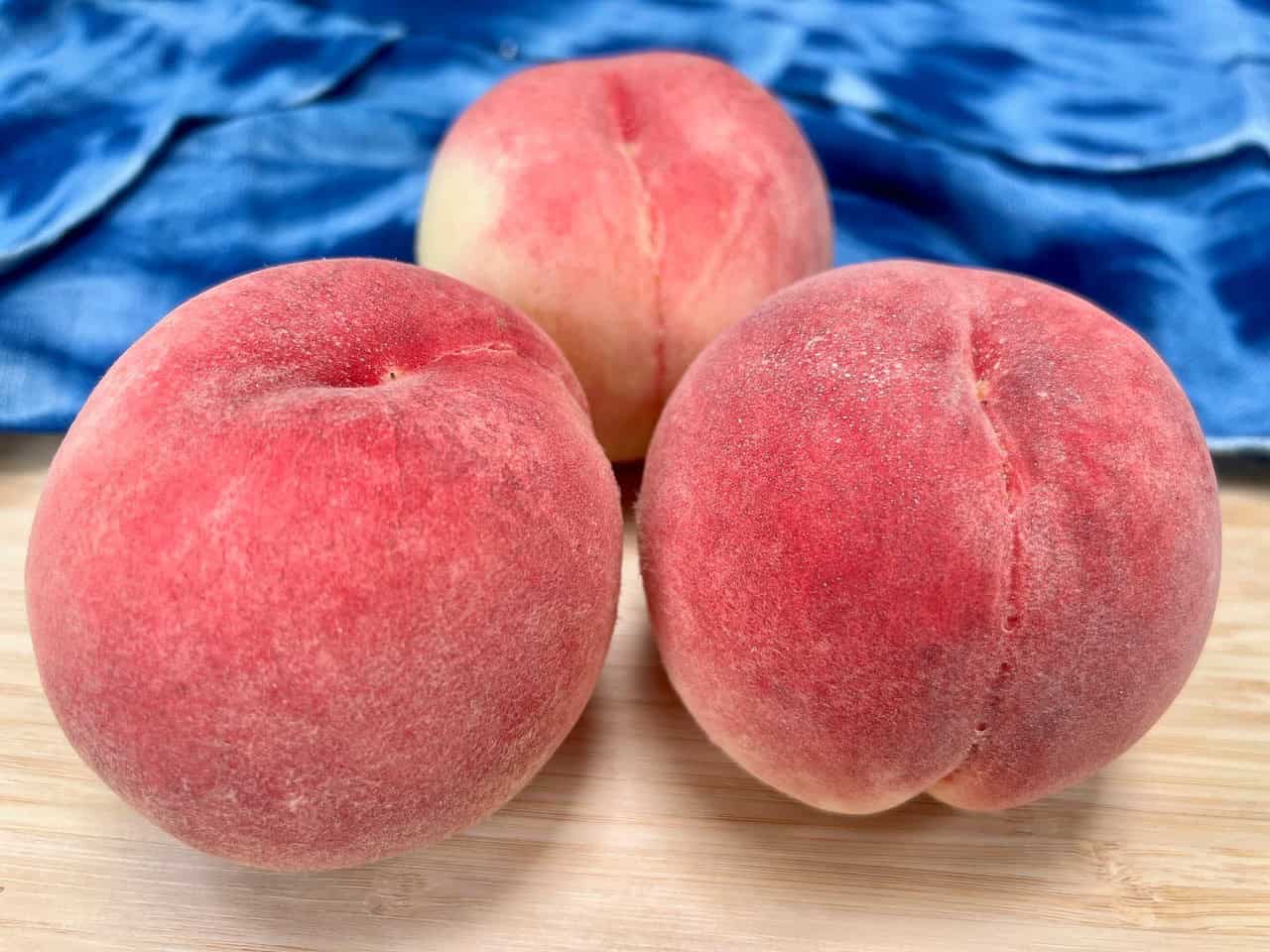
The easiest way to enjoy Japanese peaches is to eat them fresh. First, wash them gently. Then, slice them into wedges, and taste their juicy sweetness. When you eat them on their own, you can fully enjoy their special flavour, and remember that in Japan, it is normal to peel the skin of fruits to make the fruits as pleasant to the taste as possible.
For a cool treat, try adding sliced peaches to yogurt parfaits. The sweetness of Japanese peaches makes both cooked and cool sweet dishes taste even better. Peach jelly is a good option if you are wanting to try a traditional Japanese fruit, and this dessert has diced peaches in a clear, sweet gelatin.
No matter how you enjoy them, whether fresh or in dessert dishes, Japanese peaches are a great way to satisfy your sweet cravings.
How Can I Tell if a Japanese Peach Is Ripe and Ready to Eat?
A ripe Japanese peach from Fukushima has bright skin, usually showing a reddish-pink color. It will feel soft when you gently press it. You’ll also notice a sweet smell, which means it is at its best ripeness.
We hope that you found this article helpful to understand more about Japanese peaches from Fukushima, and especially the Sakura Hakuto peaches. If you’re looking to learn more about how to source Japanese premium fruits please check the Avanti 4sia website.
We will continue to introduce more information on Japanese food on this site and through our Instagram account. Here is a link to our article on Japanese rice, and here is another on Japanese sake. If you have further questions, please don’t hesitate to get in touch through our contact us page.

